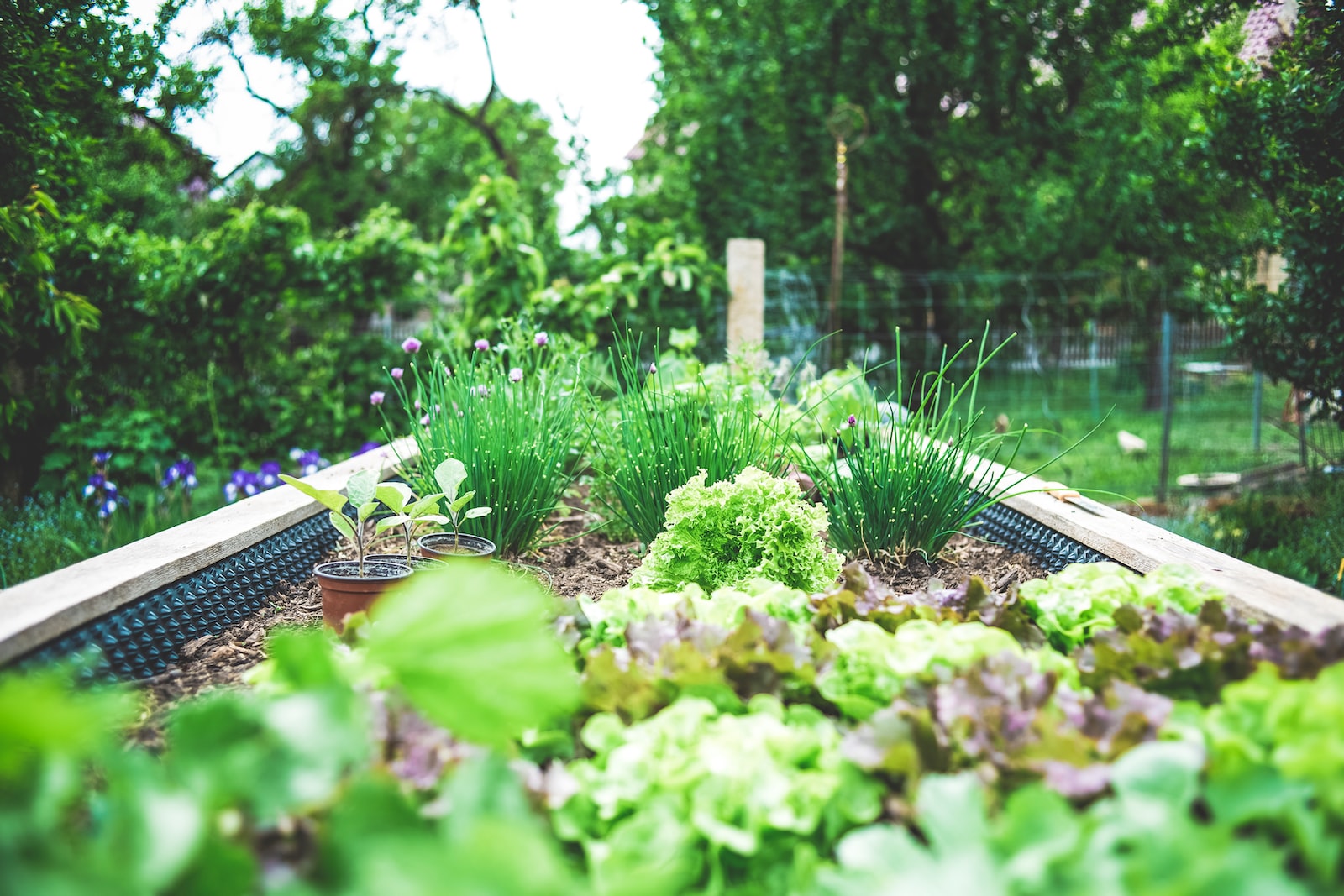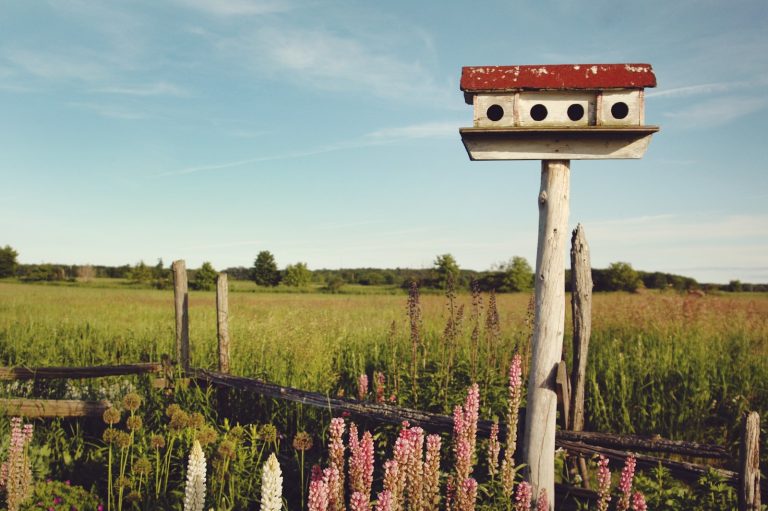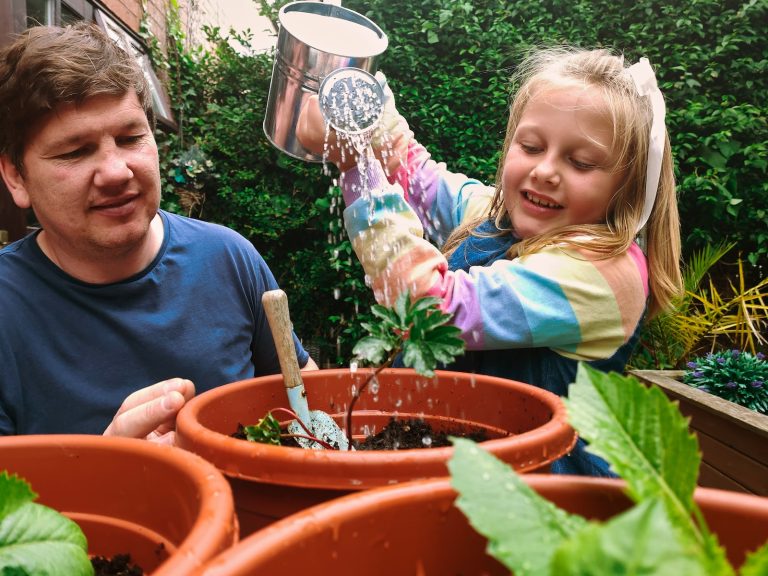Simple Steps for Starting an Herb Garden on Your Kitchen Windowsill

Are you craving the fresh, vibrant flavors of herbs in your cooking? Do you dream of having a lush garden but lack outdoor space? Fear not! Starting an herb garden is easier than you think and requires no more than a sunny windowsill.
With a few simple steps, some basic supplies, and minimal effort, you can grow your own fragrant herbs to enhance your culinary creations and add color and life to your home. In this post, we’ll show you how to get started on creating your very own kitchen windowsill herb garden. Let’s get growing!
Benefits of Starting a Kitchen Herb Garden
One of the great things about starting a kitchen herb garden is that it can offer many benefits. For one, having fresh herbs on hand can make cooking at home much more enjoyable. Not only do they add flavor to your dishes, but they can also help to boost your mood and provide essential nutrients.
Another benefit of starting a kitchen herb garden is that it can save you money in the long run. Buying fresh herbs at the grocery store can be expensive, but if you grow your own you will always have a supply on hand. Additionally, growing your own herbs means that you can control the quality and pesticide use, ensuring that your herbs are as healthy as possible.
Finally, starting a kitchen herb garden is a great way to get yourself and your family involved in gardening. It can be a fun and rewarding activity for everyone, and it’s a great way to teach kids about where their food comes from. So what are you waiting for? Get started today!
Choosing the Right Herbs for Your Garden
If you’re like most people, you probably have a few common herbs that you use regularly in your cooking. But did you know that there are dozens of other herbs that can also be used in the kitchen? And, what’s even better, is that they can be easily grown right on your kitchen windowsill!
When it comes to choosing the right herbs for your garden, there are a few things you’ll need to take into consideration. First, think about what kinds of dishes you typically make. Do you like to cook with spicy or flavorful herbs? Or do you prefer more subtlety and delicate flavors? This will help narrow down the list of potential herbs for your garden.
Next, consider the amount of sunlight that your windowsill gets. Some herbs need full sun to thrive, while others do just fine in partial shade. Make sure to check the labels on the plants before you buy them so that you know which ones will work best in your particular location.
Lastly, think about what kind of maintenance you’re willing to do. Some herbs, like basil and mint, need to be trimmed frequently to keep them from getting too leggy. Others, like thyme and oregano, are pretty low-maintenance and only need to be watered occasionally. Consider your own time and energy constraints when making your final decision.
Selecting a Good Container
When it comes to selecting a container for your windowsill herb garden, there are a few things you’ll want to keep in mind. First, consider the size of your windowsill. You’ll want to choose a container that is not too large or too small for the space.
Second, think about the type of herbs you want to grow. Some herbs require more drainage than others, so be sure to select a container with appropriate drainage holes. Third, consider the material of the container. Terracotta or ceramic pots are good choices for windowsill gardens because they help regulate soil temperature.
Finally, think about aesthetics. Choose a container that will look good in your space and enhance the plants’ beauty. With these guidelines in mind, you’ll be sure to find the perfect container for your windowsill herb garden!
Soil and Fertilizer Options
There are a few different things to consider when it comes to soil and fertilizer for your herb garden. If you’re growing herbs indoors, you’ll want to use a potting mix that is light and well-drained. You can find potting mix at your local garden center or make your own by mixing equal parts of peat moss, perlite, and vermiculite.
When it comes to fertilizer, you have a few options. You can use a slow-release fertilizer that will last a few months, or you can fertilize your herbs every couple of weeks with a water-soluble fertilizer. If you choose the latter option, be sure to dilute the fertilizer according to the package directions so that you don’t burn your plants.
Planting Instructions
If you’re interested in starting an herb garden, there are a few things you need to know before getting started. Here are some simple steps for starting an herb garden on your kitchen windowsill:
- Choose the right plants. When selecting plants for your herb garden, it’s important to choose varieties that will do well in the indoor environment of your kitchen. Some good options include basil, oregano, thyme, and rosemary.
- Get the right pots. Be sure to select pots that have drainage holes in the bottom to allow excess water to escape and prevent your plants from becoming overwatered.
- Plant in well-draining soil. Another key to success is using a high-quality potting mix that drains well and doesn’t get soggy when wet. This will help ensure your herbs don’t become waterlogged and stressed out.
- Place in a sunny spot. Most herbs need plenty of sunlight to thrive, so be sure to place your pots near a bright window where they’ll get at least six hours of direct sunlight each day.
- Water regularly (but not too much!). Be sure to keep an eye on your herbs and water them when the soil begins to dry out. Avoid letting the soil get too soggy, as this can lead to root rot and other problems.
By following these simple tips, you’ll be well on your way to growing healthy, thriving herbs indoors!
Watering Guidelines
If you’re lucky enough to have a sunny windowsill in your kitchen, you can easily grow a small herb garden that will add flavor to your cooking and brighten up your space. Here are some simple tips for getting started.
Watering is one of the most important aspects of herb gardening, so it’s important to get it right. Overwatering is one of the most common mistakes made by new gardeners, so err on the side of caution and water your herbs only when the soil is dry to the touch. Once a week is usually sufficient, but be sure to check them more often during hot, dry weather.
When watering, always use lukewarm water and keep the leaves as dry as possible to avoid leaf spot or other diseases. Water early in the day so that the leaves have time to dry before nightfall. Never let your herbs sit in water, as this can lead to root rot.
If you’re growing herbs indoors, give them a monthly dose of liquid fertilizer to keep them healthy and help them produce more flavorful leaves.
Sunlight Requirements
Herbs need at least four hours of sunlight to grow well, but can tolerate up to six. If your windowsill gets less than four hours of sunlight, you’ll need to supplement with artificial light.
You can tell if your herbs are getting enough sunlight if they start to lean towards the light source or if their leaves start to turn yellow. If your herbs are not getting enough sunlight, you can try moving them to a sunnier spot or adding a grow light.
If you want to grow herbs indoors, one of the most important factors to consider is sunlight. Most herbs need at least six hours of direct sunlight each day in order to grow properly. If you don’t have a spot in your home that gets that much sunlight, you can try growing herbs under fluorescent lights.
To determine how much light your herb garden will need, first figure out which direction your windows face. South-facing windows will get the most sunlight, followed by west-facing windows. East-facing windows will get the least amount of sunlight.
Once you know how much sun your garden spot gets, you can choose which herbs to grow. Some sun-loving herbs include basil, rosemary, and thyme. If you only have a few hours of sun each day, try growing mint or chives. These herbs can tolerate lower light levels better than other types of herbs.
Properly Harvesting Fresh Herbs
Once you have your herbs growing on your windowsill, it is important to care for them properly to ensure that they remain healthy and continue to produce flavorful leaves. Here are some tips for caring for your herbs over time:
- Water your herbs regularly, making sure to keep the soil evenly moist but not soggy
- Fertilize them every 2-3 weeks with a balanced liquid fertilizer
- Prune back the herb plants regularly to encourage new growth
- If you notice any pests or diseases, take action immediately to treat the problem
Maintenance & Troubleshooting Common Issues
Assuming you have followed the advice in the previous section and have assembled everything you need, starting your herb garden should be a breeze. However, as with any type of gardening, there is always the potential for problems. The following are some common issues that may arise, along with tips on how to troubleshoot them.
One of the most common problems is that plants simply refuse to grow. This can be due to a number of factors, including poor soil quality, lack of sunlight, or excessive heat or cold. If you suspect one of these issues is to blame, try moving your plants to a different location ortaking steps to improve the growing conditions.
Another issue that can occur is that leaves begin to turn yellow or brown and drop off. This can be a sign of nutrient deficiency, overwatering, or pests. Again, try adjusting the growing conditions accordingly and see if this solves the problem. If not, you may need to contact a professional for help identifying and solving the issue.
Finally, it’s important to keep an eye out for pests such as insects or rodents. These can quickly wreak havoc on an herb garden and should be dealt with immediately. The best way to prevent pests is by taking measures to keep them out in the first place (such as using screens on windowsills), but if they do become a problem there are many effective solutions available.
Recipes Using Fresh Herbs from Your Garden
If you’re looking for recipes that use fresh herbs from your garden, you’ve come to the right place. In this section, we’ll share some of our favorite recipes that feature fresh herbs.
Herbs are a great way to add flavor to any dish, and they’re also incredibly healthy. So, if you’re looking for ways to incorporate more fresh herbs into your diet, these recipes are a great place to start.
- Herb-Infused Olive Oil: This recipe is a great way to use up any extra herbs you have on hand. Simply combine your favorite herbs with olive oil and let it infuse for a few days. Then, use it in any dish that could use a little flavor boost.
- Basil Pesto: This classic pesto recipe is always a hit. It’s perfect on pasta, pizza, or even just as a dipping sauce for breadsticks. And, if you have basil growing in your herb garden, it’s the perfect way to use it up.
- Herb-Crusted Salmon: This easy salmon recipe is packed with flavor thanks to the addition of fresh herbs. It’s perfect for a quick and healthy weeknight meal and can be easily scaled up if you’re feeding a crowd.
- Rosemary Roasted potatoes: These potatoes are roasted with rosemary and garlic, making them the perfect side dish for almost any meal. If you have rosemary growing in your garden.
Conclusion
Starting an herb garden on your kitchen windowsill has many benefits, including providing you with fresh herbs for cooking and a way to spruce up any room. With these simple steps, you can have your very own herb garden in no time!
Whether you’re looking to grow some chives, oregano, or basil – piecing together the components of a functioning kitchen herb garden is easy and rewarding. So what are you waiting for? Open those windowsills and get growing!
James is a passionate writer and gardener with years of experience in home gardening. He is the author of several articles and blog posts on HomeGardenBlog.com, a platform where he shares his expertise and love for plants and gardening with the world.






